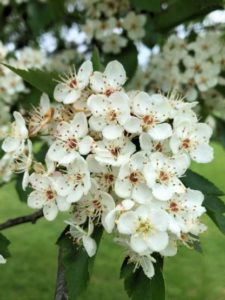When you’re looking to spruce up your home’s curb appeal, few things make as big of an impact in your yard as trees. They’re beautiful accents in the landscape, but did you know that planting them in your yard is great for the environment, too? It’s estimated that just one mature tree can filter about 48 pounds of carbon dioxide from the air each year. It uses the carbon dioxide and produces oxygen as a by-product of photosynthesis. It’s estimated that one large tree can produce enough oxygen every day to support four people.
Additionally, planting trees in the right locations in your landscape can create an effective windbreak to lower heating costs in the winter and produce shade to cool your home all summer long. All trees, both evergreen and deciduous, play an important part in conserving energy. It’s estimated that the average household can save 25% on energy bills simply by planting them strategically.
 Why Choose Native Trees for Landscaping?
Why Choose Native Trees for Landscaping?
While we agree that all trees are beautiful, native trees are a great choice for your yard. When they are planted where they naturally grow, they’ll thrive.
Native trees support the ecosystem and boost biodiversity by inviting bees, butterflies, and birds right to your yard. By planting native trees, you are providing wildlife with the food sources they are accustomed to, like leaves, seeds, insects and nuts found on them. Choosing the most appropriate trees for your home is easier than you’d think. Here are a few tips to help you select the best ones for your yard.
Choosing the Best Native Trees for Your Yard
There are many beautiful native trees, and each brings its own unique “voice” to your landscape. Luckily, there are a few ways you can narrow down your search and choose the perfect ones for your home.
1. What Purpose Will It Serve?
Are you looking for shade, or to add a punch of color to your yard? A flowering tree, like a dogwood, attracts butterflies in the spring, and its berries will bring in a wide variety of birds in the fall. An evergreen will offer color and texture all year long, while the leaves of many shade trees turn colors that will add impact to your landscape throughout the fall.
Choose different varieties so that each can play a part in year-round color and beauty.
2. Planting the Right Trees in the Right Space
As with all plants, native trees should be planted in the right spot. For example, some require full sunlight to thrive, others do well in the shade, and some, like the beautiful Eastern redbud, do well in both sun and shade. Native trees benefit most from being planted in locations where they are found naturally.
You’ll also need to consider the size of the full-grown tree when choosing its spot in your landscaping, from its height to the width of its canopy.
Trees come in a wide variety of sizes, from small, ornamental ones like the fringetree that mature under 30’ tall and less than 20’ wide to those that can reach well over 30’ tall and 30’ wide. With so many varieties to choose from, you are sure to find the perfect one to plant in the perfect spot.
Proper placement will ensure you get the most out of your trees so you can enjoy them for decades to come.
3. Consider Its Purpose
Your plants’ purpose in your landscape will help you make the right choices. For instance, planting a tree line for privacy means choosing an evergreen that keeps its leaves or needles year-round rather than a deciduous one that loses its leaves in the fall.
The different characteristics of native trees make some varieties a perfect choice for privacy, while others are a gorgeous way to add powerful colorful accents to your yard. Whatever you choose, they will be welcomed additions to any space. Whatever the purpose, native trees are beneficial to the environment and will provide years of beauty in your landscape.
It’s That Time of Year
Many people think spring is the best season for planting trees, but fall, while the ground temperatures are still warm, is also an excellent time for planting. Planting your native trees in the fall gives them three seasons to firmly establish their roots prior to the heat of summer.
Choosing native flora is a great way to add impact to your landscape, save energy, and help the environment. Whatever trees you pick, you’re sure to enjoy them for decades to come.
